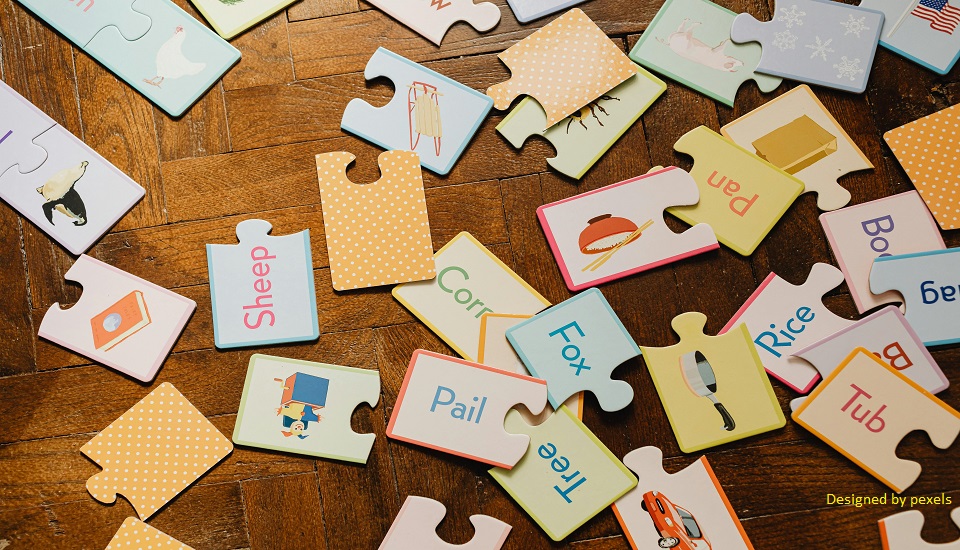India Toll Free : 1800 212 6400 | Phone : +919739615888
Email : act@asiancollegeofteachers.com | asiancollegeofteachers@gmail.com
Phonological And Phonemic Awareness - A Clear Comparison
3rd February 2025
Have you ever wondered why some children pick up reading faster while others struggle?
The secret often lies in two fundamental skills: phonological and phonemic awareness. While these terms might sound similar, they play distinct roles in a child's reading journey.
Understanding Phonological Awareness
Think of phonological awareness as a child's ability to play with spoken language. It is like having a musical ear but for words. When children develop this skill, they can:
- recognize that sentences break into words
- understand that words can rhyme
- break words into syllables
- identify words that start with the same sound
For instance, when a child can tell you that 'cat' and 'hat' rhyme or that "butterfly" has three parts (but-ter-fly), they show phonological awareness.
Why Is Phonological Awareness Important?
Before children can read, they need to understand how language works. Phonological awareness is more like building blocks for reading success. It helps children:
- develop better reading skills
- improve spelling abilities
- learn vocabulary
- memorize words
You can think of it as learning music. Before playing an instrument, you need to understand rhythm and beat. The same goes for reading – children need to know how words sound before they can read them.
Then What is Phonemic Awareness?
If phonological awareness is about working with bigger chunks of sound, phonemic awareness zooms in on the tiniest sound units – phonemes.
Suppose you take the word 'dog.' A child with good phonemic skills can:
- identify the three separate sounds: /d/ - /o/ - /g/
- replace the /d/ sound with /l/ to make a new word: 'log' ('dog' to 'log')
- blend sounds to form words
- break words into individual sounds
The Key Differences between Phonological Awareness & Phonemic Awareness
Now, this is where things get interesting. While phonological awareness is like looking at language through a wide-angle lens, phonemic awareness uses a microscope.
Below is a simple breakdown:
Phonological Awareness:
- Works with larger sound units
- Includes rhyming and syllables
- Focuses on word patterns
- Develops earlier in children
Phonemic Awareness:
- Deals with individual tiniest sounds
- Involves sound manipulation
- Focuses on sound-letter relationships
- Usually develops after phonological awareness
The Building Blocks of Reading Success
Just as a house needs a strong foundation, reading needs some core skills. If phonological awareness is the foundation, phonemic awareness is the walls. You need both to build a solid house of reading skills.
Fun Activities to Build These Skills
For Phonological Awareness:
1. Word Family Games: Create word chains where each word rhymes with the previous one (cat - hat - mat - rat).
2. Syllable Sorting: Ask children to clap out syllables in their names or favorite words.
3. Sound Detective: Play 'I Spy' with words that start with the same sound.
4. Rhythm and Rhyme Time: Use nursery rhymes to help children hear word patterns.
For Phonemic Awareness:
1. Sound Swapping: Change one sound in a word to make a new word (pig to dig).
2. Sound Blending Race: Slowly say sounds and have children race to blend them into words.
3. Sound Counting: Have children count the distinct sounds they hear in simple words.
4. Sound Hide and Seek: Remove a sound from a word and ask what is left (for instance, ‘steam’ without /s/ becomes ‘team’).
Tips for Teachers & Parents
1. Start Simple: Begin with easy activities like rhyming before moving to complex sound manipulation.
2. Make It Fun: Turn learning into games rather than drilling exercises.
3. Practice Daily: Short, regular practice sessions work better than long, irregular ones.
4. Use Visual Aids: Pictures and hand movements can help reinforce sound awareness.
Common Challenges & Solutions
Challenge 1: Mixing Up Sounds
Solution: Use mirrors to show mouth positions for different sounds.
Challenge 2: Difficulty with Blending
Solution: Start with two-sound words before moving to longer ones.
Challenge 3: Trouble with Rhyming
Solution: Use picture cards and make it into a matching game.
Why Do Both Phonological and Phonemic Awareness Matter?
Think of phonological and phonemic awareness as two parts of the same team. Together, they:
- build strong reading foundations
- help children decode new words
- improve spelling skills
- improve reading comprehension
- allow overall literacy development
- support language development
- aid in writing skills
Signs of Progress
Watch for these signs that show a child is developing these skills:
- Plays word sounds with ease
- Notices rhyming words in songs
- Breaks words into parts
- Identifies beginning sounds in words
- Shows interest in spelling
- Attempts to sound out new words
The Path to Reading Success
You need to realize that developing these skills is not a race. Some children grasp these concepts quickly, while others need more time and practice. The key is consistent, engaging practice that makes learning fun.
When children master both phonological and phonemic awareness, they become better at:
- reading fluently
- spelling accurately
- understanding what they read
- expressing themselves in writing
- succeeding in overall academics
- enjoying reading independently
- building confidence in learning
End Note
By including fun, engaging activities that target both phonological and phonemic skills, you can help children build strong foundations for lifelong reading success.
Do you want to improve your teaching ways and nurture confident, enthusiastic readers who love exploring the world through words? Join the Tesol Course in India for an in-depth grasp of English teaching skills.

